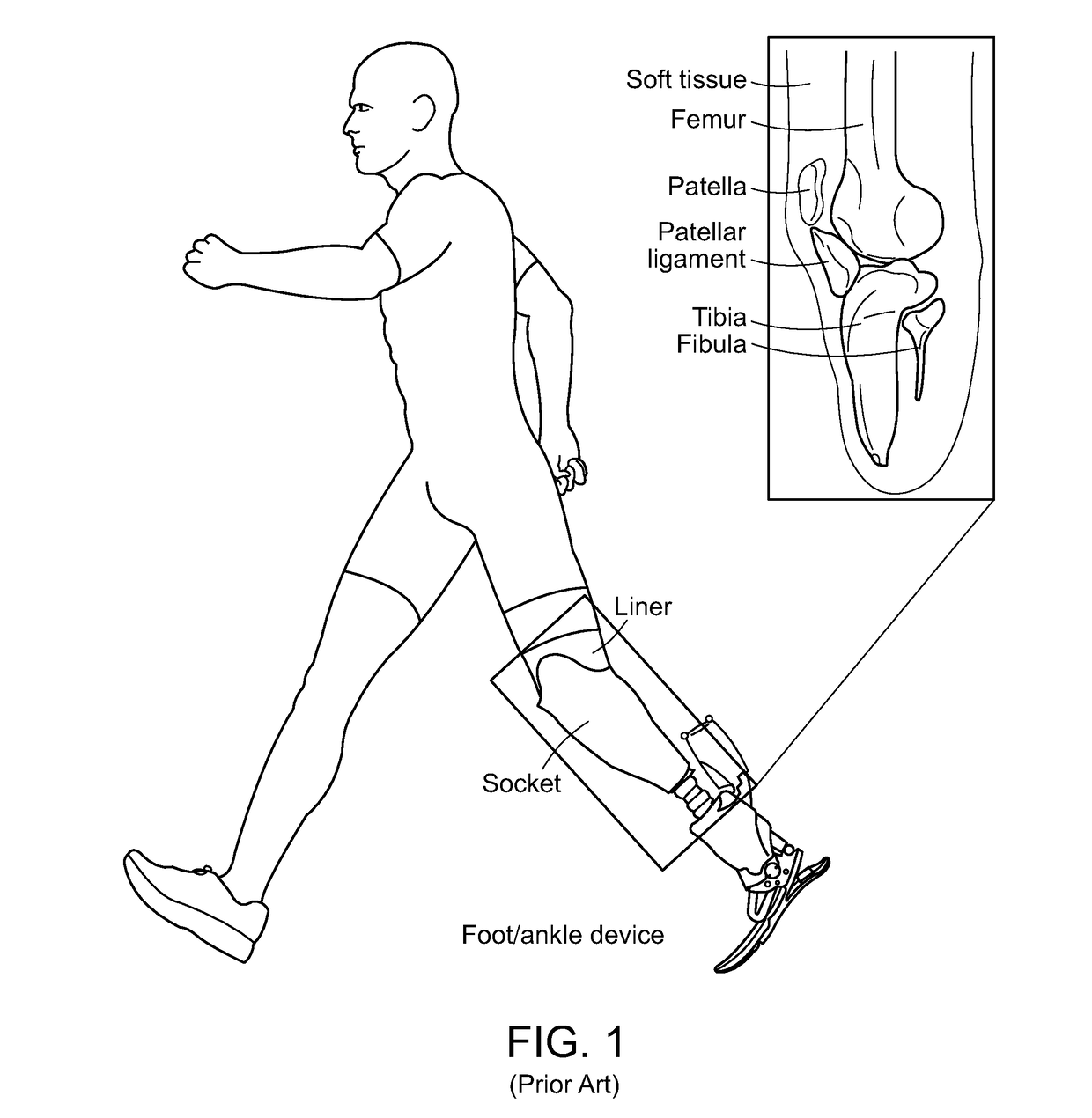Method And System For Designing A Biomechanical Interface Contacting A Biological Body Segment
a biomechanical interface and biomechanical technology, applied in the direction of prosthesis, instruments, artificial legs, etc., can solve the problems of complex interface optimization, inability to strongly repeat, and largely non-data driven, so as to ensure user physiological benefits, avoid soft tissue injury, and accurately evaluate the deformation and loading conditions of soft tissue.
- Summary
- Abstract
- Description
- Claims
- Application Information
AI Technical Summary
Benefits of technology
Problems solved by technology
Method used
Image
Examples
Embodiment Construction
[0037]Despite advances in computer aided design technologies current design methodologies for biomechanical interfaces are not fully data-driven and are manual in nature, i.e. the design process may in some cases be computer aided, but has not been computer driven such that a computational system (rather than a human) performs the action of designing. Although some have used biophysical analysis (such as FEA) to evaluate loading of manually created designs, FEA (or a similar computational biophysical technique) has not been used for automated generation of designs, and has not been combined with automated iterative design evaluation and optimization. Further, current biophysical analyses have often considered soft tissue to be linear elastic and only relatively rigid socket materials have been employed. Finally, donning induced pre-loading of the biomechanical interface device and the soft tissue have not been incorporated in frameworks for design and design evaluation.
[0038]A need ...
PUM
 Login to View More
Login to View More Abstract
Description
Claims
Application Information
 Login to View More
Login to View More - R&D
- Intellectual Property
- Life Sciences
- Materials
- Tech Scout
- Unparalleled Data Quality
- Higher Quality Content
- 60% Fewer Hallucinations
Browse by: Latest US Patents, China's latest patents, Technical Efficacy Thesaurus, Application Domain, Technology Topic, Popular Technical Reports.
© 2025 PatSnap. All rights reserved.Legal|Privacy policy|Modern Slavery Act Transparency Statement|Sitemap|About US| Contact US: help@patsnap.com



